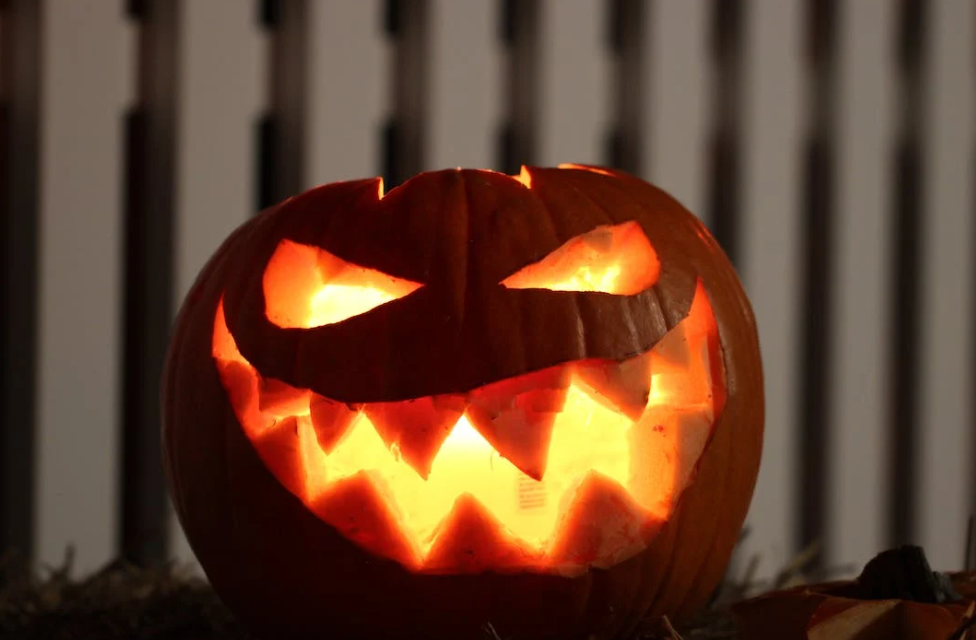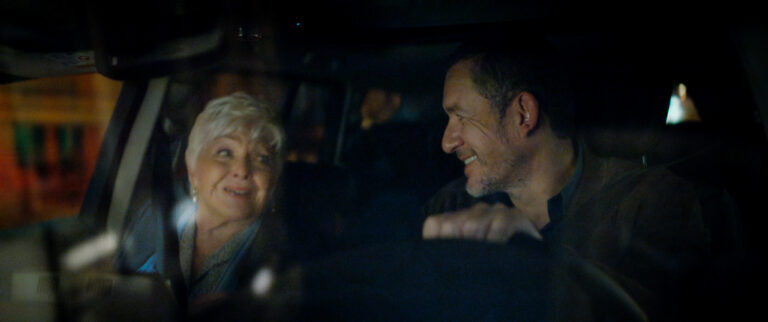Liminality: The Light and the Dark and the Origins of Halloween
Happy Halloween! Yes…it’s that time of year again…the time of year for chocolate, candy, pumpkin carvings, and costumes. It’s that time of year again for jack-o-lanterns, skeleton displays, and all things creepy and crawly…spooky and eerie…ghoulish and macabre! We probably all have or at least are familiar with many people’s favorite horror films- Friday the 13th, Nightmare on Elm Street, the Texas Chainsaw Massacre, and the Exorcist (and…how could I possibly forget the eponymous Halloween franchise?). But what exactly is the story of Halloween? Why do we celebrate this holiday? This 31st, let’s explore that question.
Halloween has its roots in Celtic society. Gaelic cultures used to celebrate Samhain; a folk festival held every autumn.1 Samhain, one of the quarter days in the medieval Gaelic calendar, took place from October 31-November 1 in Ireland, Scotland, and the Isle of Man, marking the end of the summer harvest.2,3,4. Participants would begin the festival at the end of sunset, ushering in the “darker half” of the year.5 The Celts believed that the arrival of Aos Sí (“spirits, fairies”) precipitated this “liminal” period…this boundary between our world and the “otherworld.”6. Brittonic Celts celebrated the kindred holidays of Calan Gaeaf in Wales, Kalan Gwav in Cornwall, and Kalan Goañv (“first day of winter,” literally) in Brittany.
They attempted to appease the spirits (and ensure both their survival and that of their livestock) by offering up food, drinks, and a portion of their harvests. Celebrants would also dress up in costumes and light up bonfires to chase away the ghosts and other evil spirits. They’d engage in apple-bobbing, nut-roasting, mirror-gazing, dream interpretation, and divination rituals, and they’d pour molten lead or egg whites into water7. Sometimes torchbearers would encircle one’s home or fields, imitating the path of the sun and hoping to ward off darkness and decay.
From the 16th century C.E. onwards, “mumming and guising” became a tradition. People- especially children- would put on costumes or disguises, visit different homes, and sing or chant prayers in exchange for food. This custom, which of course gave way to modern “trick-or-treating,” played with one of Halloween’s signature beliefs- that the souls of the dead arose and haunted the earth for one night a year.
As you may have guessed, the folk traditions of Samhain and other similar festivals ultimately syncretized with Christianity. “All Hallows Day” (All Saints Day, November 1-2) became one of the church’s major holidays (one in which feasts and vigils would be held). On May 13, 609, Pope Boniface IV re-dedicated the Pantheon to “St. Mary and all martyrs” on the date of Lemuria, an ancient Roman festival held in honor of the dead.8,9. In the 8th century, Pope Gregory III (731-741) founded the oratory in St. Peter’s for the relics “of the holy apostles and of all saints, martyrs and confessors,” and many sources say this occurred on November 1 (while others believe it was Palm Sunday in April 732 C.E.)10,11,12,13,14.
By the end of the 12th century C.E., those who celebrated “All Hallowtide” (one of the major holy days of obligation in Western Christianity) would mourn the souls of the dead and pray for their ascension from Purgatory by dressing in all black, ringing church bells, and sharing christened “soul cakes.”15 This too was one of the other alleged origins of “trick-or-treating.”16
Chiaroscuro lighting and other dark and gothic settings ultimately epitomize Halloween…. a holiday of the paranormal and the supernatural. Ghosts, goblins, demons, witches, vampires, zombies, werewolves, revenants…all the hideous incarnations that our collective imaginations have conjured up come out to play. Our shadows are revealed. That which is inharmonious and discordant revels for one evening and then “goes back to Hell” where it belongs!
But why…why all the symbolism? Whether or not ghosts and goblins and vampires exist (let’s at least assume for the sake of this article that they don’t), why appeal to the terror they stir within us instead of only focusing on that which really does threaten us? Werewolves? Vampires? Witches? We don’t need them. We just went through a horrible pandemic, two major wars are raging overseas, there’s the whole “climate issue” thing, and, well…even in the absence of all the above, we still always have our usual “dark clouds” (cancer, poverty, old age, political instability, depression/anxiety, loneliness, etc., etc. etc.)
The answer is that the simulacrum of terror we find in witches, werewolves, and goblins are just that…a simulacrum…a game…a creative indulgence of our imagination! This is not too different from other sports and games. Hide-and-go-seek or tag may parallel the realities of the food chain or the predator and prey dynamic, but they aren’t the same as either of the two. Football or soccer may incorporate many of the same principles of warfare—units cooperating and competing against others for dominion and control—but a battlefield and a soccer field are worlds apart. Terror and excitement are not the same thing. Some of the most evocative stories of recent years have delved into this notion. Consider Squid Game, the Saw franchise, or The Hunger Games.
An escape room or a round of archery-tag can be challenging and fun, and what kid doesn’t love “red light, green light”? But what happens when bullets and blood punctuate “red-light, green light” (as in the famous Squid Game sequence) or the “game” you’re playing obliges you to chop off your legs to survive? One reality of experience is nothing like the other…nor do the two domains overlap. More importantly though, the artificial terror of Halloween and its multitude of spooky incarnations doesn’t just parallel the darker sides of reality. It serves as an antidote to them!
We play around with our fear of death and the unknown because the very act of playing around itself can diminish our fears. This is why “gallows humor” is such a common phenomenon. Like “gallows humor,” Halloween exists to soften that boundary between the clear, calming light of day and the infinite terrors of the night. That…and it’s also a great cash cow for candy-and-costume-producing companies!
SOURCES
[1] Rogers, Nicholas. “Samhain and the Celtic Origins of Halloween”. Halloween: From Pagan Ritual to Party Night. Oxford University Press, 2002. pp. 11–21.
[2] “How Halloween Traditions Are Rooted in the Ancient Pagan Festival of Samhain”. Time. Retrieved 4 December 2019.
[3] A Pocket Guide to Superstitions of the British Isles (Publisher: Penguin Books Ltd; Reprint edition: 4 November 2004)
[4] All Hallows’ Eve Archived 3 November 2011 at the Wayback Machine BBC. Retrieved 31 October 2011.
[5] Monaghan, Patricia. The Encyclopedia of Celtic Mythology and Folklore. Infobase Publishing, 2004. p. 407
[6] O’Halpin, Andy. Ireland: An Oxford Archaeological Guide. Oxford University Press, 2006. p. 236
[7] Danaher, Kevin. “Irish Folk Tradition and the Celtic Calendar”, in The Celtic Consciousness, ed. Robert O’Driscoll. Braziller, 1981. pp. 218–227
[8] Saunders, William. “All Saints and All Souls”. Catholic Education Resource Center. Archived from the original on 18 September 2016. Retrieved 19 September 2016.
[9] Melton, J Gordon (editor). Religious Celebrations: An Encyclopedia of Holidays, Festivals, Solemn Observances, and Spiritual Commemorations, Volume 1. ABC-CLIO, 2011. p.22
[10] Hopwood, James A. (2019). Keeping Christmas: Finding Joy in a Season of Excess and Strife. Wipf and Stock Publishers. p. 47. ISBN 978-1-5326-9537-7. The name “Halloween,” of course, is a contraction of “All Hallow’s Eve.” That’s the eve of All Saints Day, or All Hallows Day, as it was popularly known in Britain. As with Christmas Eve and the Easter vigil, the celebration of All Saints Day began with a service the night before, on All Hallow’s Eve. With All Souls Day on November 2, it formed the feast of Allhallowtide. All Saints Day began in fourth-century Rome as a festival honoring Christian martyrs. By the eighth century, it was expanded to all those remembered as saints, and the date of its observance was moved from May 13 to November 1. That move, of course, put it smack dab on top of Samhain in Britain. But the decision to move the date was not made in Britain; it was made in Rome, where there was no Samhain or anything like it. There is no evidence that any Samhain customs rubbed off on Halloween anywhere because there is no evidence of any Samhain customs at all.
[11] Chisholm, Hugh, ed. (1911). “All Saints, Festival of” . Encyclopædia Britannica (11th ed.). Cambridge University Press.
[12] “All Saints’ Day”, The Oxford Dictionary of the Christian Church, 3rd edition, ed. E. A. Livingstone. Oxford University Press, 1997. pp.41–42
[13] McClendon, Charles. “Old Saint Peter’s and the Iconoclastic Controversy”, in Old Saint Peter’s, Rome. Cambridge University Press, 2013. pp. 215–216. Quote: “Soon after his election in 731, Gregory III summoned a synod to gather on 1 November in the basilica of Saint Peter’s in order to respond to the policy of iconoclasm that he believed was being promoted by the Byzantine Emperor […] Six months later, in April of the following year, 732, the pope assembled another synod in the basilica to consecrate a new oratory dedicated to the Saviour, the Virgin Mary, and all the saints”.
[14] Ó Carragáin, Éamonn. Ritual and the Rood: Liturgical Images and the Old English Poems of the Dream of the Rood Tradition. University of Toronto Press, 2005. p. 258. Quote: “Gregory III began his reign with a synod in St Peter’s (1 November 731) which formally condemned iconoclasm […] on the Sunday before Easter, 12 April 732, Gregory convoked yet another synod […] and at the synod inaugurated an oratory […] Dedicated to all saints, this oratory was designed to hold ‘relics of the holy apostles and all the holy martyrs and confessors'”.
[15] Rogers, Nicholas (2001). Halloween: From Pagan Ritual to Party Night. Oxford University Press. pp. 28–30.
[16] “Halloween”. Encyclopædia Britannica. Archived from the original on 30 October 2012. Retrieved 25 October 2012.



